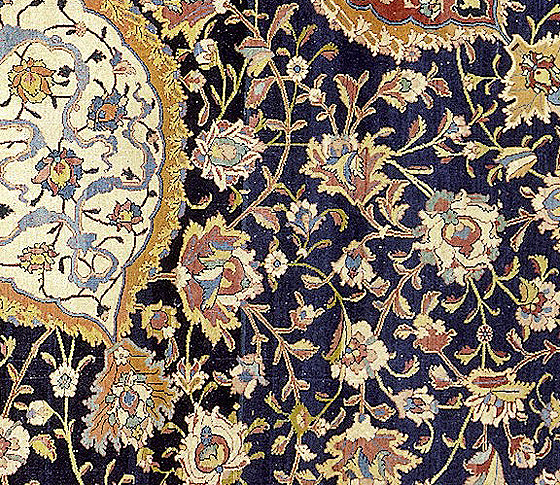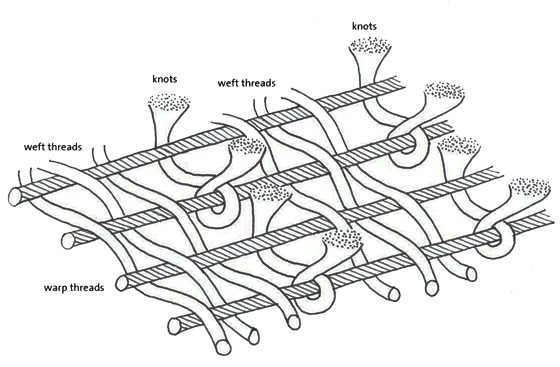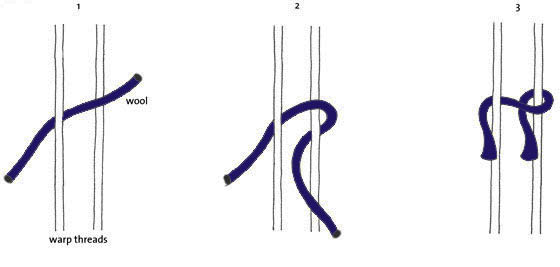|

Detail showing pile of Ardabil Carpet
How the Ardabil Carpet was made
The basic structure of the carpet is hidden by the pile. Like most
textiles, it consists of warps and wefts. The warps are the threads
running the length of the carpet. The wefts are the threads that run
across its breadth. Both warps and wefts are made from silk, which is a
very strong fibre when new.
The first stage in production was to tie the warps on to a huge, vertical
loom. The weavers then knotted short lengths of wool around the warps to
create a row of pile. When the whole row was finished, they inserted three
rows of weft over and under the warps to hold the knots in place. The pile
was then packed down with a special comb-like beater. Finally, the pile
was trimmed with special scissors to achieve a uniform length. This
process was repeated again and again until the huge carpet was finished,
when a final trimming would have taken place.
The pile is made from wool, which holds dye much better than silk. The
pile is very dense - there are about 5300 knots per ten centimetres square
(340 knots per square inch). This density allowed the designer to
incorporate a great deal of detail, but making such a large carpet with so
many knots would have taken a team of skilled weavers several years.
Up to ten weavers may have worked on the carpet at any one time. Most
carpet weaving was done at home by women, but for a court commission such
as this, the weavers may have been men.
The weavers would have worked from drawings provided by a specialist
designer. The patterns are generally symmetrical, but there are often
small differences between the two halves. This suggests that the drawings
showed the overall pattern required but not the colour of each knot.
The pattern includes ten colours. The wool was dyed in batches using
natural materials such as pomegranate rind and indigo, so the shades vary
slightly. For example, the blue background appears to 'ripple' where
darker and lighter batches of wool were used.
The direction of the pile shows that the weavers began at the end with the
smaller lamp. The colours are best viewed from that end.

Structure of the Ardabil Carpet

The type of knot used to create the pile of the Ardabil Carpet |

